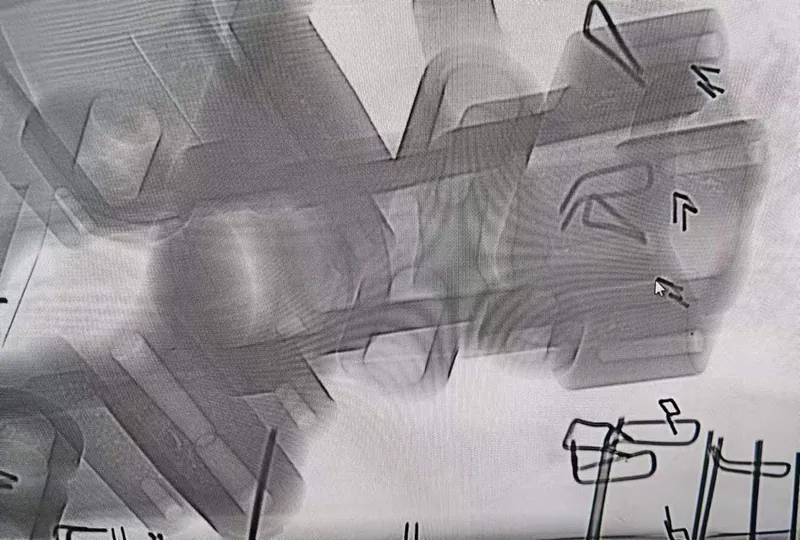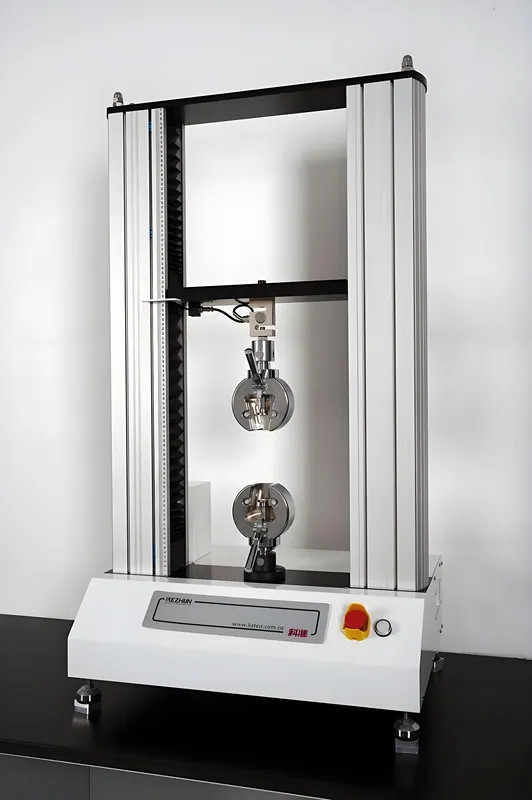Quality of castings
Date: 2025-01-24 Categories: Blog Views: 1365
The reliability of aluminum castings lies in the strict casting quality verification process. Through a set of casting inspection methods, quality management. Not only to ensure that each casting meets the design standards, but also to enhance its performance and long-term stability.
Aluminum casting inspection method
Hersin uses a series of sophisticated inspection methods for aluminum castings, and each casting meets the quality requirements. Each aluminum casting is rigorously inspected to allow it to meet predetermined standards in terms of performance, dimensions and chemical composition.
1. Radiography and visual inspection

Quality control of castings uses visual inspection techniques to ensure that castings are free of defects such as cracks, porosity, and voids. Each casting is inspected in detail to ensure that there is no distortion or bending. Once the inspection is complete, the castings are compared to the quality control program and process requirements. Finally, all inspection results are recorded and archived for future use by the production department and process engineers.
2. Mechanical properties check
In order to verify whether the mechanical properties of aluminum castings meet the requirements, Hersin will carry out a series of mechanical tests to ensure that the quality of aluminum castings meets the standards of mechanical properties. The main test methods include:

- Hardness Test: Testing the strength of the product by striking it with an electronic hardness instrument
- Tensile test: A destructive test that measures the tensile strength, yield strength, and elongation of aluminum castings to ensure their structural stability.
- load test: Testing the performance of aluminum castings when subjected to certain structural loads to ensure that they can withstand predetermined pressures, especially hydraulic testing of pressure vessel-type aluminum castings.
3. Size check
We follow casting industry standards to set the size range of castings and pay special attention to critical dimensions according to customer requirements. During the inspection process, we use micrometers, thread and plug gauges, CMMs and other precision tools for dimensional measurements to ensure the accuracy and consistency of each casting.
4. Chemical composition check
Strict control is also carried out on the chemical composition of aluminum castings. We use an X-ray fluorescence analyzer (XRF) to test the chemical composition of each batch of liquid aluminum. Prior to casting, sample aluminum liquids are poured into small molds for testing to ensure that the alloy composition meets specifications. If necessary, the alloying elements in the liquid aluminum are fine-tuned to ensure that the casting chemistry meets design criteria.
Non-destructive testing and quality assurance
Non-destructive testing is a key part of ensuring the quality of aluminum castings. Hersin has partnered with American Metal Testing (AMT) to provide a range of NDT services to ensure that aluminum castings are fully inspected without damage. Nondestructive testing includes:
- Liquid Permeation Detection: Used to find small cracks on the surface of aluminum castings.
- magnetic particle inspection: inspection of aluminum castings for surface and near-surface defects, especially suitable for ferromagneticaluminum.
- X-ray examination: Ensure the quality of aluminum castings by detecting defects such as porosity and inclusions inside the aluminum casting by X-ray.
These non-destructive testing methods can effectively ensure the stability and reliability of aluminum castings in practice.
Aluminum casting quality classification
The quality of aluminum castings is usually assessed from three aspects: external, internal and service quality:
1. Appearance quality
Appearance inspection is an important part of the quality control of aluminum castings, the main inspection:
- Surface smoothness: Affects the subsequent processing and appearance of aluminum castings.
- surface defect: such as porosity, trachoma, cracks, etc., directly affecting the quality of aluminum castings.
- Size and shape deviation: Non-conforming dimensions and shapes can affect the assembly and function of aluminum castings.
2. intrinsic quality
The intrinsic quality directly affects the strength, wear resistance and corrosion resistance of aluminum castings. Hersin ensures the intrinsic quality of aluminum castings by the following ways:
- chemical composition: The composition of the alloy must meet the design requirements, affecting the mechanical properties of aluminum castings.
- metallographic structure: The metallographic organization of aluminum castings determines their strength, hardness and wear resistance.
- mechanical property: The strength, hardness and toughness of aluminum castings affect their service life.
- physical property: Properties such as density, thermal conductivity, etc., affect the use of aluminum castings.
- internal flaw: Defects such as porosity and cracks affect the durability and strength of aluminum castings.
3. Quality of use
The quality of use determines the performance of aluminum castings in practical applications, including:
- abrasion resistance: The ability of aluminum castings to maintain a good surface condition over a long period of time.
- corrosion resistance: Whether aluminum castings can maintain stable operation in a corrosive environment.
- High and low temperature resistance: The ability of aluminum castings to maintain performance in high or low temperature environments.
- Fatigue performance: Whether the aluminum casting can withstand repeated stress.
- vibration absorption: Whether aluminum castings are effective in absorbing shocks and reducing the risk of breakage.
Factors affecting the quality of aluminum castings
1. devise
Reasonable design is the foundation of high quality aluminum castings. Huxin's design team takes into full consideration the characteristics of casting process to avoid design defects affecting the quality of aluminum castings.
2. Casting process
Excellent casting process can ensure the quality stability of aluminum castings. Hersin ensures the high quality of aluminum castings through precise control of temperature, pressure and other factors.
3. Quality of materials
The quality of aluminum castings is closely related to the raw materials used. Hexin conducts strict screening of each batch of aluminum alloy to ensure the stability of the composition and to avoid material quality problems affecting the performance of aluminum castings.
4. Process operation
Standardized operation standards can ensure the manufacturing quality of aluminum castings. Hersin sets detailed standards for each process and conducts strict training for employees.
5. quality control
Each aluminum casting must pass strict quality inspection to ensure that it meets the design standards. Hexin uses X-ray, ultrasonic and other inspection methods to ensure that each aluminum casting meets the requirements.
reach a verdict
The quality of aluminum castings directly affects their performance in applications. Through precise design, advanced casting process and strict quality control, Ningbo Hexin ensures that each aluminum casting can work stably in various complex environments to meet customers' needs.


















